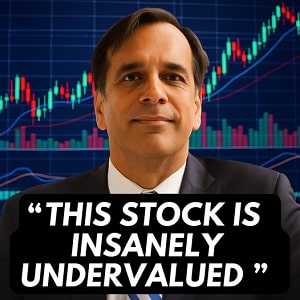Struggling to profit from trading volatility? Master proven strategies for 2025 to navigate unpredictable markets and secure consistent gains. Learn the secrets now.
Understanding Volatility in Trading
Volatility is the pulse of financial markets, which is the rate, and scale of the price changes during a certain period. It is a measure of uncertainty, indicating how much the price of the security can swerve, which makes it a crucial idea for traders. There are two forms of volatilities; implied volatility that forecasts future movements of markets based on the accounting of options, and historical volatility, which gauges how price veered in the past.
There are different indicators that can be used by traders to measure volatility, which include VIX (Volatility Index), ATR (Average True Range), and Bollinger Bands that all facilitate insights into market behavior. Knowing about volatility is the first step to controlling it because the knowledge of it can either become a danger or a chance for traders in 2025.
Why Volatility is Critical for Traders
Volatility is not, after all, a property of the market, but the market’s opportunity. Volatility for traders is the quick swings of prices that can make it possible to post huge wins or suffer dramatic losses in a matter of very few minutes. Comprehension of volatility is important because it illustrates the possibility of prices fluctuating whereby both rising and plummeting markets can be exploited by the traders.
Nonetheless, this potential brings with it the risks. Lots of traders commit what is termed as overleveraging of their positions during the volatile period to suffer huge losses. Global events, economic news, interest rates change, and geopolitical stresses are among the most essential drivers of market volatility. By becoming aware of such triggers and keeping in mind a possibility of a sudden switch in a market, traders can make uncertainty their ally and convert market chaos into profit.
Best Strategies for Trading Volatility in 2025
Winning in volatility trading in 2025 involves using various strategies of specific natures for varying market situations. The most potent of them all is the options trading, whereby traders make use of calls and puts to profit from price variations without actually owning the asset. Hedging strategies, for instance, use of inverse ETFs enable traders to guard their portfolios from sudden losses.
For people who love making quick gains, scalping and day trading provides opportunities to make money on very rapid price movements, whereas swing trading is perfect for medium-term trend ride. High level techniques such as straddles and strangles will allow traders to capitalize on massive price movements in any direction. However, there is no strategy, which does not have proper risk management, where stop-loss orders should be used, position sizing should be correct and no emotional decision should be made. A good strategy can transform uncertainty in a volatile market into a constant profit.
Advanced Tools for Volatility Trading
In 2025, studying volatility trading is no longer a matter of strategy – but the case of devices. High-end trading platforms such as MetaTrader, TradingView and Thinkorswim offer live streaming data, individualized alerts and automatic trading in order for traders to have an extra edge. The charting tools, such as candlestick patterns, bollinger bands, and the relative strength index (RSI), are helpful in analyzing moves in the markets while the volatility indicators like the VIX provide insights on market sentiments.
For people who want even more precision, there are artificial intelligence and automated bots that can make trades without any delay, following rules, and eliminating emotional biasing. Merging powerful software, technical indicators, and automation, traders can effectively track the situation on the market, respond to a sudden turn of the events in the market, and make evidence-based decisions, making chaos on the market work in their favor.
Analyzing Market Conditions for 2025
To be a successful volatility trader in 2025, one needs to understand the market first. There are different factors that fuel volatility in the market, with interest rate changes, geopolitical events, global economic data, and corporate earnings reports, being some of them. It is pertinent for the traders to be in the know of these triggers, the aim being to predict price fluctuations. Individual sector volatility is another essential factor -the technology stocks can respond drastically to new innovations, while the energy market depends on the price of oil.
Technical analysis is also important as we have moving averages, support and resistance levels and breakout patterns which will be very helpful in determining points of entry and exit for a trader. Incorporating the fundamental insights in technical analysis, traders could estimate the market conditions, anticipate sudden changes and modify their techniques for long-term wins.
Risk Management in Volatile Markets
Risk management is the cornerstone of profitable volatility trading, especially, in unpredictable markets. In the absence of a good plan, the most profitable strategies can cause huge losses. The first action in risk management is the setting off the stop-loss orders which automatically closes the losing trades at predetermined levels getting the capital of yours protected. The second important tactic is diversification with the distribution of investments across other assets, an investor can minimize the exposure to a market’s swings.
As far as position sizing is concerned, this ensures that you do not risk overdoing your chips on any one trade; while a risk-to-reward ratio helps you ascertain expected gains in comparison to the potential losses. Equally important is emotional control; traders should not go panic selling during market turbulence and avoid over-trading. Through having clear rules and staying disciplined, traders can trade through volatile markets with confidence and consistency.
Case Studies: Successful Volatility Trades in 2025
Volatility trade mastering can be done through studying real-world examples; this is one of the best approaches for such mastering. In 2025, some of the traders recorded tremendous success as they succeeded in exploiting market swings thoroughly. For example, in case of an unscheduled panic selling off the tech industries, a smart trader employed put options to gain income as stock prices nose dived, as the perceived market scare became an opportunity.
Another trader used a straddle strategy prior to a big announcement from the Federal Reserve, having a profit irrespective of the market direction. In the energy industries, a proficient trader took advantage of oil price oscillations by using the swing trading strategies to realize profits during increasing and declining prices. These case studies demonstrate that winning in volatility trading is not a matter of forecasting market movements perfectly but rather the matter of taking the right strategies and being disciplined. In studying all these, the traders can learn a lot from them, not make mistakes that are heard of and rely on their own strategies.
Common Mistakes to Avoid in Volatile Markets
Volatile market can be very profitable, but it’s very easy to incur huge losses when you are not careful. A common mistake is chasing losses where the traders increase their positions in the hopes of getting back those they have lost in the past and ending up losing more. Another dead trap is disregard of market news staying nil regarding key economical events, earnings releases or geopolitical twilights may see traders not ready for volatility upsurges.
Overtrading is another mistake committed often, as traders put excessive risk in trying to make money out of every price move and end up with burned out portfolios. Also, most traders do not establish appropriate stop-loss orders leaving them to higher levels of risks than they should be. If traders are aware of these typical errors and practise rigorous risk management, they can protect their investment and make calculations.
Tips for Consistent Success in Volatility Trading
Volatility trading success is something you have to work for and it takes a disciplined and strategic approach as well as a continuous education. First of all, traders should follow their trading strategies and should not make decisions that go with their emotions; otherwise they may engage in impulsive trades when volatility is high. Continuous learning is important – markets change, and being up to date with new strategies, trends in markets, and technologies is necessary to flourish long-term.
Periodical performance review helps traders evaluate their strategies and where they must make changes based on the earlier deals. While following a healthy risk management routine including use of stop-loss orders, diversification of the portfolios, and controlling the sizes of positions shields from big losses and ensures experiencing full potential benefits.
Finally, having a patient attitude is very important-shaky markets can provide a lot of short term noise, but if one remains invested for the long term, then better opportunities are likely to be found. Through the adoption of discipline, risk management, and constant learning, traders can turn the most volatile market to their favor.
Conclusion
Being able to trade volatility is an important factor of success in the chaotic market of 2025. Market uncertainty can be turned to opportunities by comprehending volatility and using effective strategies. Different from options trading, hedging or technical analysis, each of the strategies has their own methods of making profits based on price fluctuations. Yet successful risk management is key: the use of stop-loss orders, diversification of portfolios and persistence in trading all these are the keys for long-term success.
The thing to remember is that though it is intimidating, volatility can be a great weapon provided one uses it wisely. While the markets keep on changing, traders who are flexible, keep learning, manage the risk will be best equipped to win in the markets. It is about time to start implementing these strategies and realize your potential for profitable trading in the conditions of volatile markets.
Frequently Asked Questions (FAQ)
What is volatility in trading?
Volatility refers to the rate and magnitude of price movements in financial markets over time. It reflects uncertainty and potential risk, but also opportunities for traders.
Why is volatility important for traders in 2025?
Volatility presents both profit opportunities and risks. Understanding it allows traders to exploit rapid price swings in either direction, making it a key factor in 2025 trading strategies.
What are the main types of volatility?
The two primary types are implied volatility, which predicts future market movements based on options pricing, and historical volatility, which measures past price changes.
What indicators are useful for measuring volatility?
Popular tools include the VIX (Volatility Index), ATR (Average True Range), and Bollinger Bands, which help traders understand and respond to changing market conditions.
What are the best volatility trading strategies for 2025?
Effective strategies include options trading, scalping, swing trading, hedging with inverse ETFs, and advanced setups like straddles and strangles.
How do I manage risk in volatile markets?
Key tactics include using stop-loss orders, proper position sizing, diversification, and maintaining emotional discipline to avoid panic or overtrading.
What tools and platforms help with volatility trading?
Top platforms like MetaTrader, TradingView, and Thinkorswim offer advanced charting, alerts, and automation. Some traders also use AI bots for emotion-free, rules-based trading.
What factors drive market volatility in 2025?
Major drivers include interest rate changes, economic reports, geopolitical events, and sector-specific news, such as innovation in tech or oil price fluctuations.
Can you profit from market drops during volatility?
Yes. Strategies like put options, inverse ETFs, and short selling can help traders benefit from declining markets.
What are the common mistakes to avoid when trading volatility?
Avoid chasing losses, ignoring news, overtrading, and failing to use risk management tools like stop-losses. Emotional decision-making can also lead to costly errors.
How can I become more consistent in volatility trading?
Stick to a defined strategy, continue learning, review your trades regularly, and apply strict risk management. Patience and discipline are crucial for long-term success.
Is volatility trading suitable for beginners?
It can be, but beginners should start small, focus on education, use demo accounts or paper trading platforms, and practice risk control before trading real capital.


































